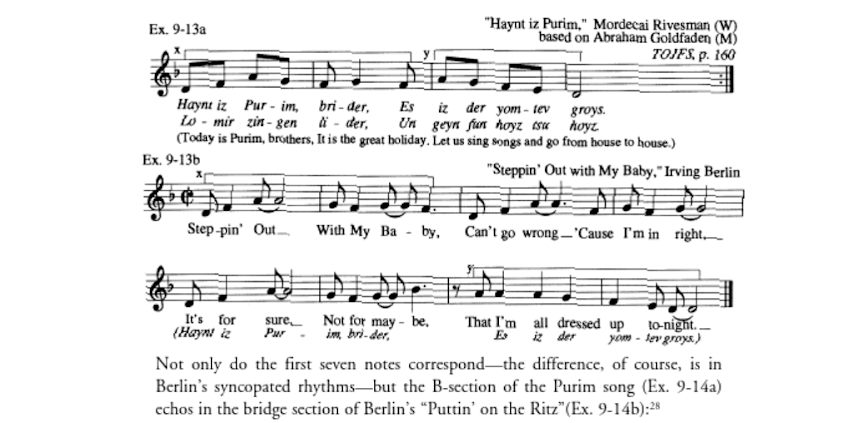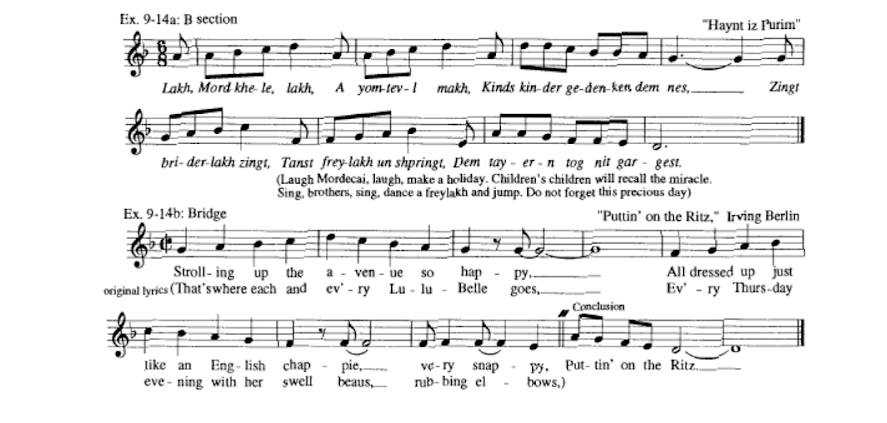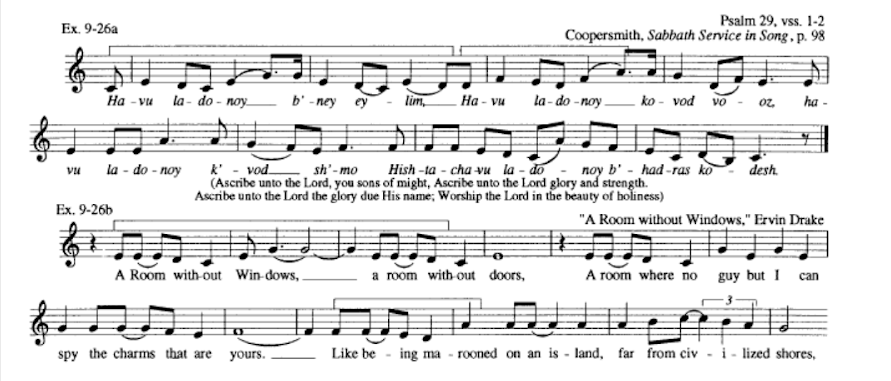Assignment 4 - Jasmine Yuan
Final Project Conceptualization
Updated Journey Map
The website begins by playing a random music selection. The user learns more about a key figure involved in the music, such as the composer or performer. They enter the network of the music community in Berlin in the 1920s through this figure. From there, the user experiences a “day in the life” of this person, and chooses a journey to follow as they explore different aspects of the music scene while learning more about their historical lives. I want the site to showcase the importance of music in defining Jewish communal identity and history.
Making the archive more active:
One idea I had of making the archive more participatory is to allow users to collect the music from the website into their own playlist. From there, they can group the songs in the playlist according to metadata such as the composers, performers, genre, and places performed. They can find connections between the music this way.
Core topics:
The main idea is to have the user explore the life of figures involved in the music scene as they navigate through:
- Popular music culture: Popular music trends, the “jazz age” & musical influences, and the life of Jewish performers in 1920s Germany - through the lens of Harry Frommermann (Jewish member and founder of the Comedian Harmonists)
- Political satire, gender, and sexuality in the weimar cabaret - through the lenses of Curt Bois (performer), Valeska Gert (performer) and Friedrich Hollaender (composer). Focus on the Kabarett der Komiker, as the Comedian Harmonists performed there in October 1928
- Concert music - lenses of Berta Geissmar (orchestra manager & secretary) and Franz Schreker (composer). The Comedian Harmonists make a crossover by performing popular music in concert halls. They are the first popular-music group to play in the Berlin Philharmonic hall.
- Religious & synagogue music - music in sacred rituals, Jewish religious life, and the influence of synagogue music on popular song today. Focus on the New Synagogue.
People:
- Curt Bois (https://en.wikipedia.org/wiki/Curt_Bois) - cabaret
- Friedrich Hollaender (https://en.wikipedia.org/wiki/Friedrich_Hollaender) - cabaret composer
- Harry Frommermann (https://en.wikipedia.org/wiki/Comedian_Harmonists) - member of the Comedian Harmonists
- Valeska Gert (https://en.wikipedia.org/wiki/Valeska_Gert) - cabaret actress
- Berta Geissmar (https://en.wikipedia.org/wiki/Berta_Geissmar) - connections to Berlin Philharmonic
- Franz Schreker (https://en.wikipedia.org/wiki/Franz_Schreker) - composer, concert & opera
Articles:
- “Lavender Songs: Undermining Gender in Weimar Cabaret and Beyond”- Alan Lareau (https://jewishlifeinberlin.slack.com/messages/CGG5SU7UJ/files/FGK44MY93/)
- “The German Cabaret Movement during the Weimar Republic” - Alan Lareau (https://jewishlifeinberlin.slack.com/messages/CGFDY3L5N/files/FGK44MY93/)
- “Reading Uncle Bumba and the Rumba: The Comedian Harmonists and Transnational Youth Culture at the End of the Weimar Republic” - Stephan Pennington (https://jewishlifeinberlin.slack.com/messages/CGFDY3L5N/).
- “Visual Music: Jazz, Synaesthesia and the History of the Senses in the Weimar Republic” - Michael J. Schmidt (https://jewishlifeinberlin.slack.com/messages/CGG5SU7UJ/files/FGJ72MT4H/)
- “Popular Entertainment and Mass Media: The Central Arenas of German-Jewish Cultural Engagement” (https://jewishlifeinberlin.slack.com/messages/CGG5SU7UJ/files/FGJLWP9RR/) - socioeconomic class & popular culture
- “The Jazz Republic, Music, Race, and American Culture in Weimar Germany” - Jonathan O. Wipplinger (https://jewishlifeinberlin.slack.com/messages/CGG5SU7UJ/files/FGJ29PWL8/)
- “Jews and Music” - Judah Cohen (http://www.oxfordbibliographies.com/view/document/obo-9780199840731/obo-9780199840731-0063.xml)
- Synagogue Music https://www.myjewishlearning.com/article/synagogue-music/
Images:
- Kabarett der Komiker (Cabaret of Comedians) http://www.cabaret-berlin.com/?p=87 https://commons.wikimedia.org/wiki/Category:Kabarett_der_Komiker
- Scala https://commons.wikimedia.org/wiki/Category:Scala_(Berlin) http://www.cabaret-berlin.com/?p=41
- Synagogues https://en.wikipedia.org/wiki/New_Synagogue,_Berlin https://commons.wikimedia.org/wiki/File:Berlin_Synagoge_Oranienburgerstrasse_Grundriss.jpg https://commons.wikimedia.org/wiki/File:Berlin_Neue_Synagoge_Innenansicht_BusB.jpg
- Comedian Harmonists https://commons.wikimedia.org/wiki/File:BASA-1868K-1-44-1-Comedian_Harmonists,_Berlin,_01.01.1928.jpg https://commons.wikimedia.org/wiki/File:Ch-aula.jpg
Music:
-
Cabaret: Das lila Lied” (the “Lavender Song”) - https://www.youtube.com/watch?v=d_a3UkF3aTI Lyrics: https://www.facinghistory.org/resource-library/audio/lavender-song-das-lila-lied “Just Suppose” (“Gesetzt den Fall”), composed by Hollaender -https://www.youtube.com/watch?v=YacFH_PQgv0
-
Comedian Harmonists & Popular music: “Mein Kleiner Grüner Kaktus” - Comedian Harmonists - https://www.youtube.com/watch?v=HyqzJTNcygE “Der Onkel Bumba aus Kalumba tanzt nur Rumba” (Uncle Bumba from Kalumba Dances Only Rumba) - Comedian Harmonists - https://www.youtube.com/watch?v=QkmCJ9eSIpw Sam Wooding & His Chocolate Kiddies - Bull Foot Stomp - https://www.youtube.com/watch?v=Y-oGmh2EwRU
-
Concert Music: “ Peer Gynt, Op. 23” Berlin Philharmonic - https://commons.wikimedia.org/wiki/File:Peer_Gynt_Suite_-_Part_1-_Morning.oga Beethoven - Berlin Philharmonic - https://commons.wikimedia.org/wiki/File:Polydor-66943a-925bi.ogg
Videos:
Footage of the Comedian Harmonists: https://www.youtube.com/watch?v=c9DFdBAwJds
Scores:
Scores taken from Funny, It Doesn’t Sound Jewish: How Yiddish Songs and Synagogue Melodies Influenced Tin Pan Alley, Broadway, and Hollywood by Jack Gottlieb


